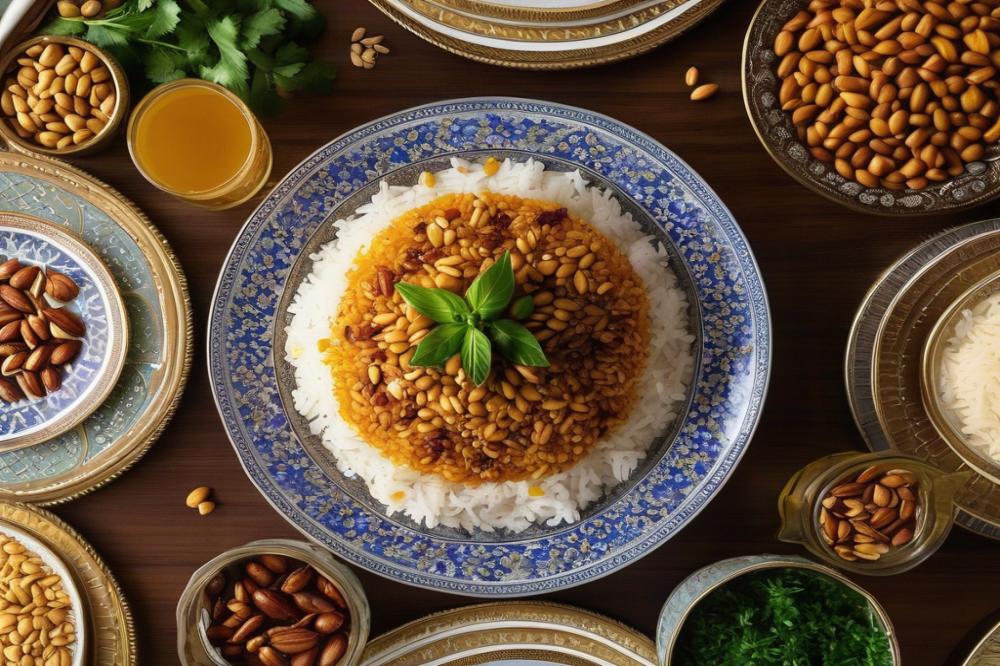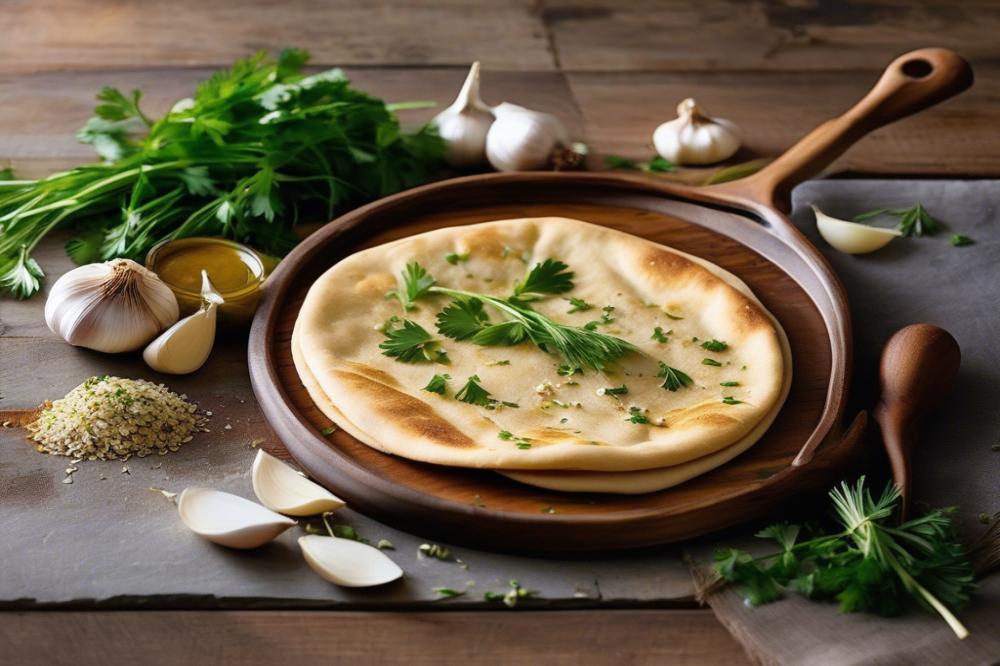The Art of Making Lebanese Rice and Pine Nut Stuffing
Overview of Lebanese cuisine and Its Significance
Lebanese cuisine is a vibrant blend of flavors, colors, and textures. It holds a special place in the culinary world, reflecting the rich history and culture of Lebanon. Often celebrated for its fresh ingredients, herbs, and spices, Lebanese meals bring people together. Each dish tells a story of tradition and community, capturing the essence of Mediterranean cooking.
Importance of rice recipes in Lebanese Meals
Rice recipes play a central role in Lebanese meals. Serving as the base for many dishes, rice is versatile and satisfying. From casual family dinners to festive meals, it is a staple that complements various flavors. Often paired with meats or vegetables, it enhances every plate. The preparation of rice can vary greatly, showcasing the creativity found in Lebanese kitchens.
Brief Introduction to Pine Nuts and Their Role in Stuffing
Pine nuts add a delightful crunch and flavor to many stuffing recipes. These tiny seeds are harvested from pine cones, and their rich, buttery taste makes them a favorite ingredient. In the context of Lebanese cooking, they are commonly found in stuffing, adding a unique texture to dishes. Vegetarian stuffing options often feature pine nuts, bringing richness and depth to meals. Incorporating them into recipes elevates the dining experience, highlighting the beauty of Middle Eastern dishes.
Lebanese Rice
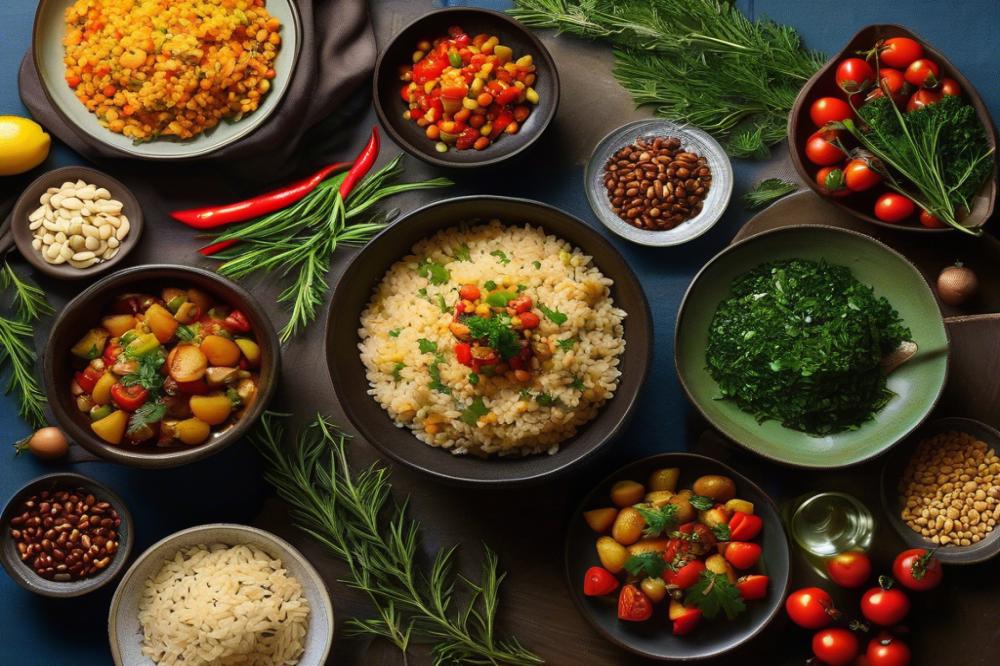
The essence of Lebanese rice lies in its fluffy texture and aromatic flavors. Often flavored with various herbs and spices, this dish enhances many Middle Eastern dishes. Its distinctive taste makes it a favorite in both casual and festive meals. Common seasonings like cumin, cinnamon, and cardamom elevate the overall flavor profile, giving it a Mediterranean twist.
Various rice varieties find their place in Lebanese cooking. Long-grain basmati rice is prevalent, known for its light and fluffy nature. Other options include short-grain rice, which has a stickier quality, making it suitable for certain stuffing recipes. Each variety plays a role in the dish, bringing unique characteristics to the table.
Traditional cooking methods play a significant part in achieving perfect rice. First, rinsing the grains removes excess starch, preventing a gummy texture. Next, toasting the rice in a little oil before adding water enhances its flavor and provides a lovely aroma. Finally, cooking with the right water-to-rice ratio is crucial for ideal tenderness.
When preparing vegetarian stuffing, mixing rice with pine nuts adds a delightful crunch. Finely chopped vegetables and herbs contribute fresh notes, expertly blending with the starch to create a balanced dish. Cooking rice properly sets the foundation for stuffing recipes, ensuring flavor and texture work together seamlessly. Lebanese cuisine, with its rich heritage, continues to inspire home cooks and gourmet chefs alike.
Ingredients and Cooking Instructions
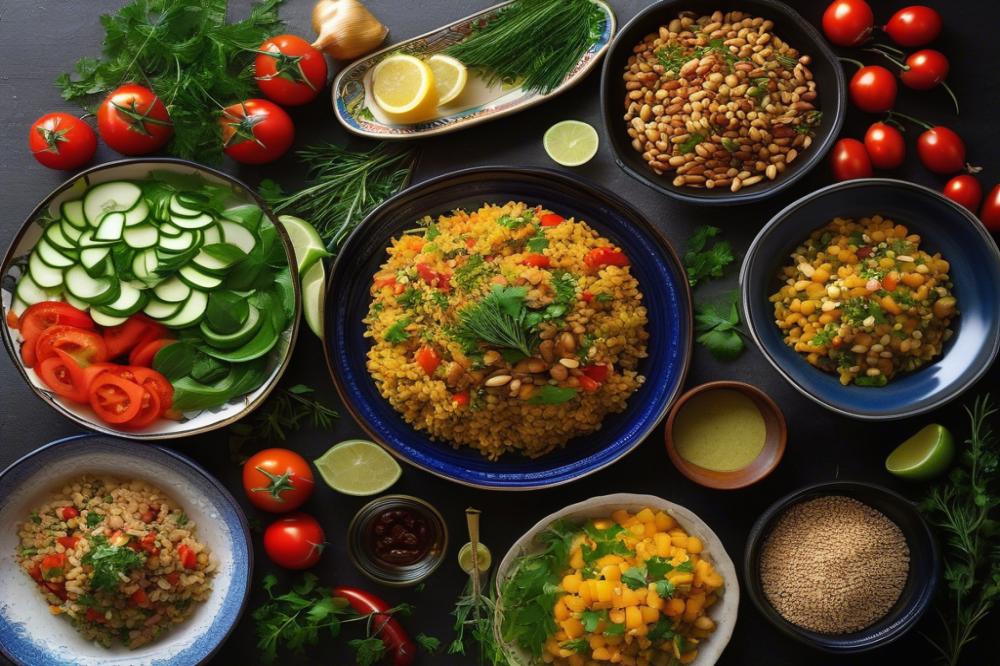
List of Ingredients
For the rice and Pine Nut Stuffing, gather the following ingredients:
- 1 cup long-grain rice
- ½ cup pine nuts
- 2 tablespoons olive oil
- 1 medium onion, finely chopped
- 2 cloves garlic, minced
- 1 teaspoon ground cinnamon
- ½ teaspoon allspice
- ¼ teaspoon black pepper
- 2 cups vegetable broth or water
- ½ cup raisins (optional)
- Fresh parsley, chopped, for garnish
Cooking Instructions
Begin by rinsing the rice in cold water. This removes excess starch. Set it aside to drain. Next, heat the olive oil in a medium saucepan over medium heat. Add the onions and sauté until they turn soft and golden.
Stir in the minced garlic and cook for about a minute until fragrant. Now, add the pine nuts and toast them lightly. This will enhance their flavor. Then, incorporate the spices: ground cinnamon, allspice, and black pepper.
Once the spices blend well into the mixture, add the rinsed rice. Stir everything together for a few minutes. Pour in the vegetable broth or water and bring the mixture to a gentle boil. Cover the pan, reduce the heat to low, and let it simmer. Cooking time should be around 15-20 minutes until the rice is tender.
If you like raisins, toss them in half-way through the cooking process. This adds a sweet contrast to the savory dish. When the rice is done, remove from heat. Allow it to sit covered for another 5 minutes. Fluff it gently with a fork before serving. Garnish with chopped parsley for a touch of freshness.
Tips for Best Texture and Flavor
To achieve the finest texture, consider the quality of your rice. Long-grain varieties work wonderfully in this dish. Adjusting the cooking liquid can also affect the outcome. If you prefer a richer flavor, try adding a pinch of saffron or a bay leaf during cooking.
Incorporating herbs can bring fresh notes. Consider using thyme or dill to enrich the stuffing experience. For an extra layer of taste, lightly browning the nuts before adding can elevate the overall flavor profile.
Serve this vegetarian stuffing with Middle Eastern dishes or festive meals. Many enjoy it as part of a larger spread featuring grilled vegetables or roasted meats. Your guests will love this traditional, aromatic treat from Lebanese cuisine.
Nutritional Information
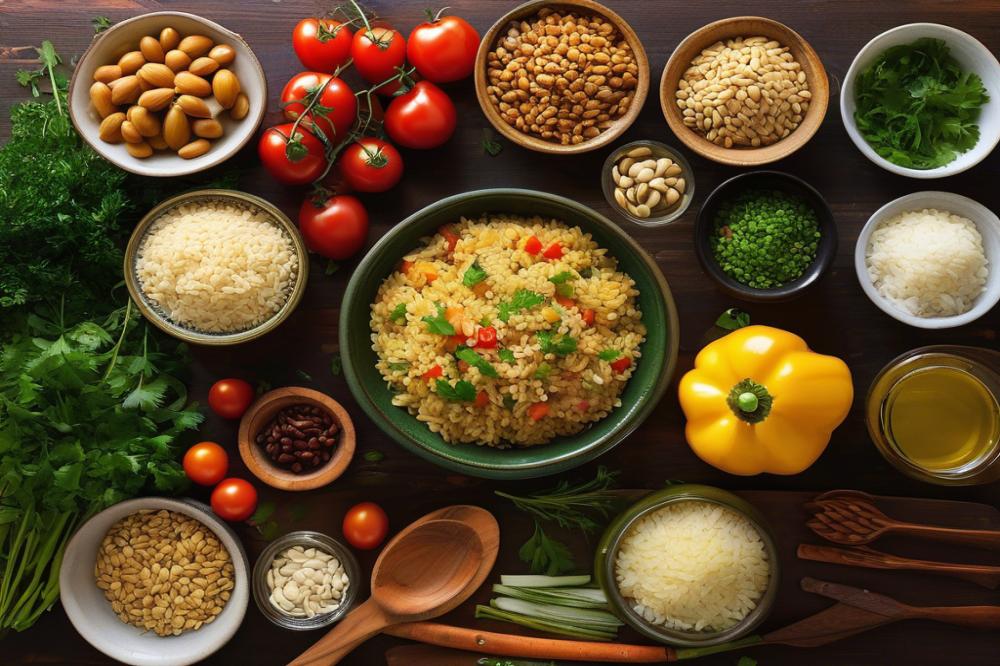
The ingredients in the pine nut stuffing contribute to a diverse range of nutritional values. Rice, as a carbohydrate source, provides energy while being low in fat. Pine nuts are a standout ingredient. They are rich in healthy fats, protein, and essential vitamins. In fact, just a small serving offers significant amounts of vitamin K and magnesium, which support bone health and overall wellness.
Herbs used in this stuffing, like parsley and mint, not only enhance flavor but are packed with nutrients. Parsley is a great source of vitamins A, C, and K, helping to boost the immune system. Mint has digestive properties that can soothe the stomach. Both add freshness to this dish, making it appealing in many Mediterranean cooking contexts.
Health Benefits of Pine Nuts and Herbs
Pine nuts bring more to the table than just taste. Their antioxidants help in reducing inflammation in the body. These nuts also contain arginine, which may improve blood circulation. On the other hand, the herbs used elevate the overall health profile. Fresh herbs provide a variety of vitamins and antioxidants, which can reduce the risk of chronic diseases.
In addition, they help boost metabolism. Using fresh ingredients like these supports the concept of traditional cooking, honoring the natural flavors of the Mediterranean. Recipes that incorporate ingredients like pine nuts and herbs often provide balanced nourishment.
Comparison with Other Stuffing Recipes
When comparing this stuffing with other stuffing recipes, it stands out in several ways. Many stuffing mixtures can be heavy, packed with bread and butter. The Lebanese version, however, leans towards a lighter alternative, focusing on rice. Vegetarian stuffing offers unique health advantages, especially for those avoiding meat during festive meals.
This recipe emphasizes fresh ingredients rather than processed ones. In contrast to typical stuffing recipes, the use of rice results in a gluten-free option. Also, the incorporation of spices and herbs, commonly found in Middle Eastern dishes, introduces layers of flavor not always present in more traditional stuffing.
Serving Suggestions
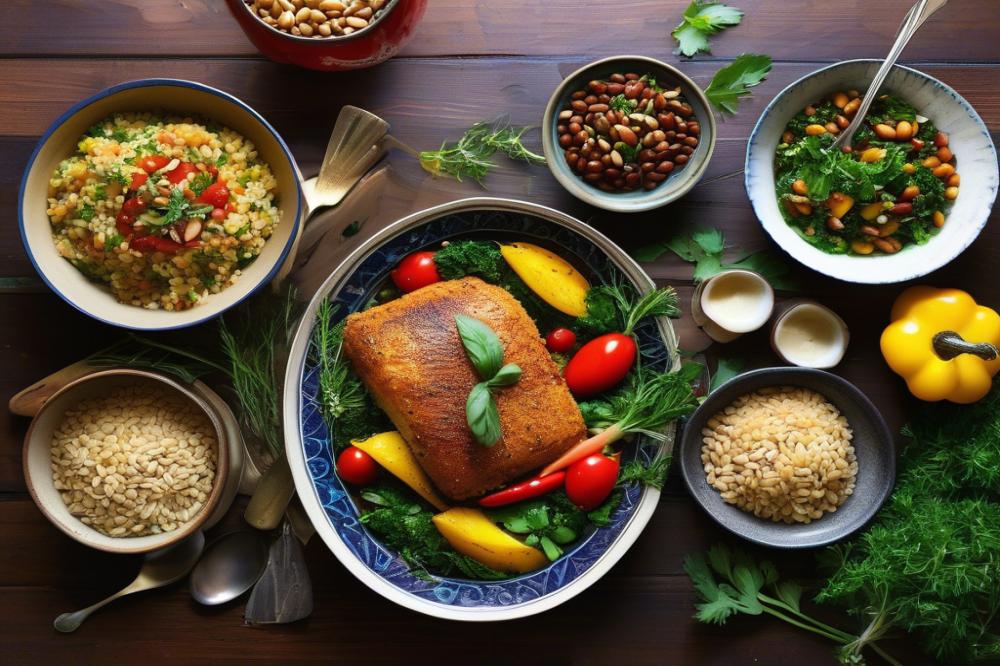
Lebanese rice and pine nut stuffing is a delightful addition to any meal. This dish shines when served alongside tender roasted chicken or lamb. Pairing it with a fresh salad brings balance to the meal. A simple cucumber and tomato salad dressed with lemon complements the flavors wonderfully.
Middle Eastern dishes offer many options for serving this unique stuffing. Think of having it next to classic roasted eggplant or stuffed grape leaves. These pairings highlight the herbs and spices used in both dishes. For vegetarian versions, consider adding stuffed bell peppers filled with a similar rice mixture. Such combinations elevate the dining experience significantly.
Ideas for Festive Meals and Special Occasions
During celebrations, this stuffing can play a key role on the festive table. It works perfectly as a side dish during family gatherings or holiday feasts. When preparing for special occasions, consider serving it in larger portions. Guests will appreciate the rich flavors that come from traditional cooking methods.
Creating a themed meal can be fun. Include dishes like tabbouleh or baba ghanoush to add variety. Such Mediterranean cooking enhances the overall experience. For a hearty meal, offer a generous bowl of lentil soup too. The taste profiles of these recipes balance nicely with the stuffing, making it truly memorable.
When planning for celebrations, remember the role of presentation. Serving the rice and pine nuts in a decorative bowl can catch the eye. Garnishing with fresh herbs gives a pop of color. Keeping the meal inviting helps make it more appealing to diners.
Embracing Flavors and Togetherness
Lebanese rice and pine nut stuffing holds a special place in the hearts of many. This dish represents more than just food; it embodies heritage and tradition. Often enjoyed during family gatherings, it brings people together around a shared meal. Every bite carries the warmth of home and the love poured into its preparation. Preparing this dish is not just about the ingredients; it is about creating memories.
Exploring Lebanese cuisine opens up a world of rich flavors and diverse ingredients. The techniques used in traditional cooking are often passed down through generations. These methods connect us to our ancestors while inviting creativity in our kitchens today. Each recipe tells a story, making the cooking process an adventure. Discovering various rice recipes can inspire anyone to experiment with flavors and discover new favorites.
Finally, there is a unique joy in preparing meals for others. Sharing the results with family and friends can strengthen bonds. Every gathering becomes a festival of flavors, laughter, and love. Cooking, especially dishes like stuffed rice with pine nuts, fosters connection. It reminds us of what really matters—being together and cherishing every moment enjoyed at the table.

